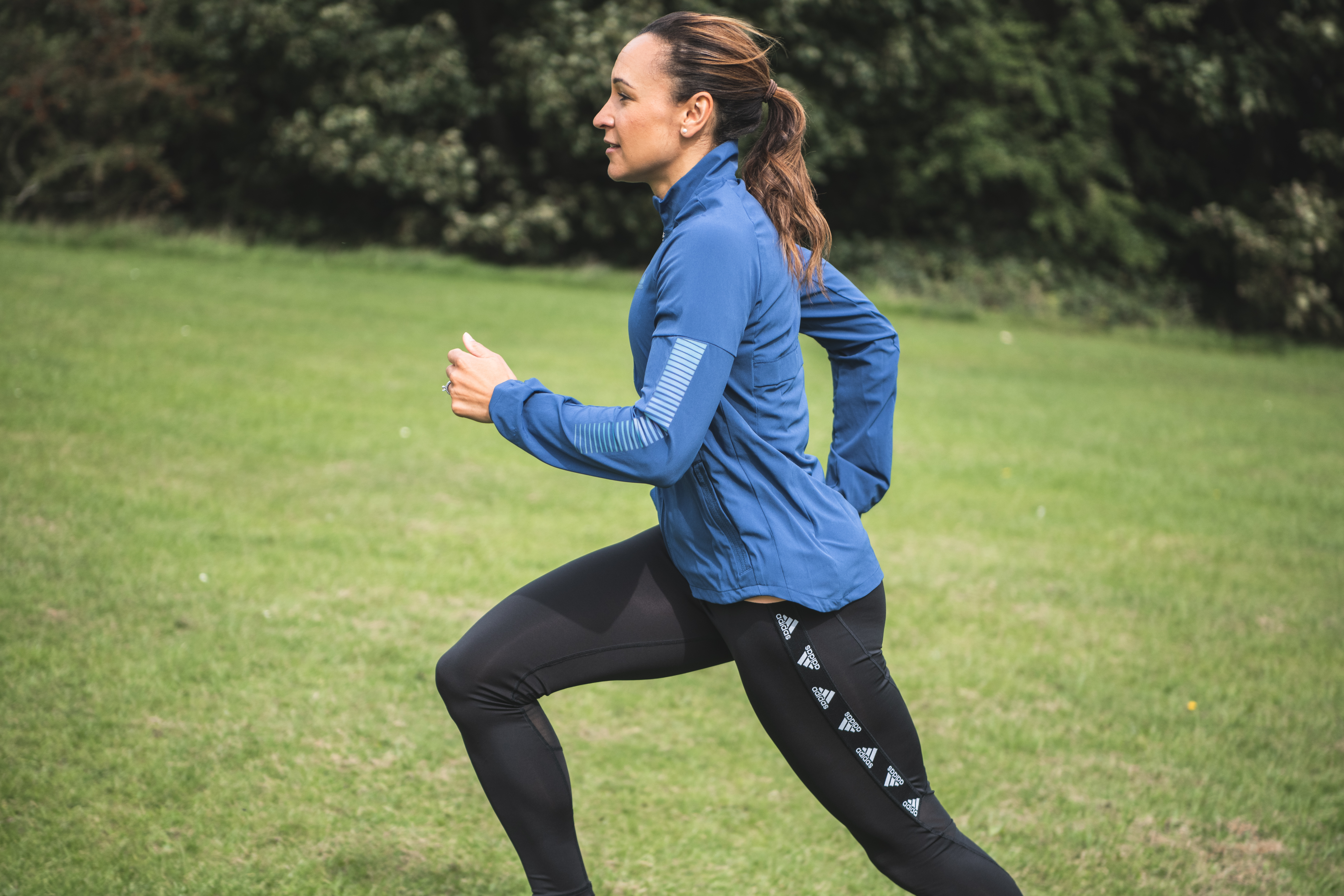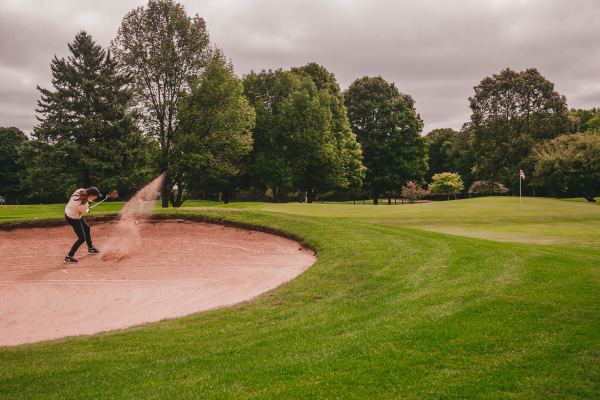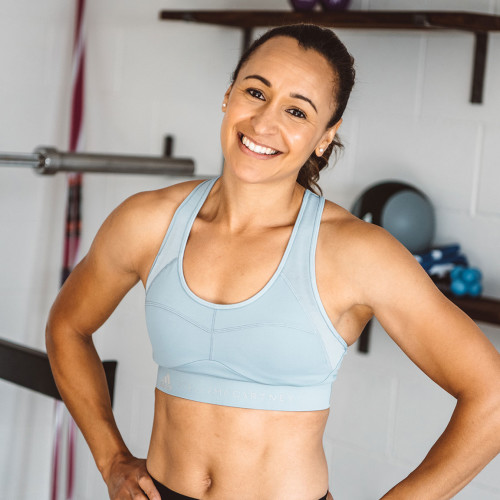How to improve your fitness and performance with 3 simple breathing exercises
4 months ago
Training4 months ago
Training
Whether you’re just starting out on your fitness journey, you’re chipping away at that ParkRun time or you love ultra-endurance running, it’s possible to improve your performance, just by adapting your breathing. Jennis breathwork coach Georgie Lawlor shows you how…
We're breathing all the time – around 24,000 breaths per day – but most of us aren't really taking advantage of the power of something as simple as our breath.
“By focusing on the way you breathe, being more conscious and using simple techniques to make your breathing more efficient, you can create small, positive shifts – like being able to self-regulate and calm your nervous system after exercise,” explains Georgie Lawlor , Jennis breathwork coach.
“When it comes to your physical fitness and performance, it can also reduce fatigue and improve stamina and endurance over time. And the best thing is, it works by utilising something we’re doing anyway, our breathing.”
Here, Georgie delves into the science and shares 3 practical exercises that will help you push your fitness by using the power of your breath.
If you’re thinking that breathwork sounds a bit woo-woo, there’s plenty of emerging research to back up the benefits. A 2008 study published in Respiratory Physiology & Neurobiology reported significant improvements to anaerobic fitness after just 4 weeks of adding breathwork training into running sessions.
Runners who did daily breathwork exercises to strengthen their diaphragm and ribcage muscles were able to cover 5% more distance
To add weight to this, a trial published in the Journal of Sports Sciences showed that runners who did daily breathwork exercises to strengthen their diaphragm and ribcage muscles were able to cover 5% more distance.
So, just why is working on your breath such a game-changer? “When you’re running hard, your breathing muscles (or inspiratory muscles) start to tire,” says Georgie. “This can lead to a breathless feeling, but it can also stop oxygen getting where it needs to go to keep you running strong.”
“In an attempt to replenish your breathing muscles, your body works hard to send blood to the rescue from other parts of your body. Usually, if you are running, this will be from your legs,” explains Georgie.
It’s because of this redirection of bloodflow away from the legs that you may experience that sensation of jelly legs. Breathing smarter enables you to replenish both your breathing muscles and the muscles powering your movement, which in turn means there’s less of an impact on your running or workout performance.
The other benefit of breathwork training is that it can impact the efficiency of your breathing by improving your body’s response to carbon dioxide.
“You inhale to take in oxygen, which your body needs for energy,” explains Georgie. “And when you breathe out, you get rid of the excess converted carbon dioxide and bring fresh oxygen into the lungs.”
“The thing that is less known is that when you breathe hard and fast during a workout, you end up exhaling more carbon dioxide. This decreases oxygenation and turns your body into one big stress knot that ultimately leaves you feeling exhausted,” says Georgie.
Breathing through your nose can increase your oxygen uptake by about 10-20%
“As strange as it sounds, because of this, the less you breathe, the more oxygen gets delivered across your body.”
Here, Georgie applies the science with some simple techniques for a significant performance boost, below.
Why it works:
Nasal breathing provides a 50% air resistance compared to mouth breathing and helps you to breathe slower and more deeply. As a result, breathing through your nose can increase your oxygen uptake by about 10-20% .
Try it today:
First up, next time you are out for a run or doing a Jennis work-out, tune into your breathing to see if you prioritise breathing through your mouth. Then, next time you’re working out or going for a walk, try to be conscious of breathing through your nose.
It might feel uncomfortable at first and this could feel quite tough while running, so start slow and only exercise to the point where you can maintain nasal breathing. Eventually, by keeping it nasal, your breathing muscles won’t tire so quickly.
This will make workouts more enjoyable and allow you to go that little bit further.
Why it works:
Breath holds are a brilliant way to reduce those feelings of breathlessness and workout for longer, with a lot less effort. The reason for this is that during that short breath hold, carbon dioxide builds in your lungs and blood. This, in turn, results in a better oxygen uptake for your tissues, muscles and cells.
The more you practise, the more your body is able to build up this buffer to offset fatigue, so you can go further and still feel great.
It's really important to stay relaxed in your body when doing breath holds, so build up slowly and avoid tensing up! Research has also found that practising breath holds could help towards improved endurance and faster recovery, a stronger diaphragm and even a decrease in brain fog!
Try it today:
Start walking (moving or on the spot). Gently start to breathe in and out through your nose.
Place your hands on your lower ribs, and for the next few breaths, focus on breathing into your hands, imagining that your ribs are an accordion, moving out and in.
Now, let’s try a breath hold. Gently breathe in through your nose into lower ribs, then exhale. From here, hold your breath as you walk 10 paces, relaxing as much as you can.
After holding, take six minimal breaths – like you’re breathing teaspoons of air in and out. Then breathe normally for a few breaths.
Repeat this and try increasing your breath hold to 15 paces.
If you feel it’s getting very difficult, or you start to feel anxious, stressed or panicked, just stop or reduce the number of paces. The more you can relax, the more energy efficient you’re being and the easier you’ll find this.
The next level is to try this while jogging or sprinting as part of your warm-up.
NOTE: Skip this one if you’re pregnant, have high blood pressure or a heart condition.
Why it works:
After an intense workout, your body might need help transitioning from that active state to a more restful one. Consciously slowing down your breathing and adding some breath holds is an efficient way to help your sympathetic nervous system (that fight-or-flight response) take a break and allow your parasympathetic nervous system (the rest and digest response) to call the shots.
Holding your breath after exhaling can also help you recover quicker by slowing your breath – increasing oxygenation and enhancing blood flow.
Try it today:
You can do this walking, sitting, standing or lying. Just get comfortable after your workout. Take three breaths in through the nose and out from the mouth.
Then switch to nasal breathing. Gently breathing in and out – on the exhale, let your breath just run out and pause for five seconds.
Breathe normally for two breaths.
This time, try the breath hold again on the exhale. As you hold, imagine a lift moving down from the top of your head down to the base of your pelvis. Allow the pause to be a sense of relief.
Breathe normally for two breaths. Repeat this twice more.
You’ll hopefully notice that your breath begins naturally slowing down and you're already transitioning into that more restful state.
You can also use this technique if you’re having an anxiety or panic attack. Holding your breath may feel like the last thing you want to do, but it can really help you control your breath and oxygenate your body.
 Cycle syncing
Cycle syncing Perimenopause
Perimenopause Perimenopause
Perimenopause Perimenopause
PerimenopauseSign up to learn everything you need to know about CycleMapping, plus how you can live better and feel better through optimising your fitness to you.
This website uses cookies to ensure you get the best experience on our website. Learn more

Sign up for the very latest news on women's fitness, health and hormones, plus be the first to receive exclusive offers and extras